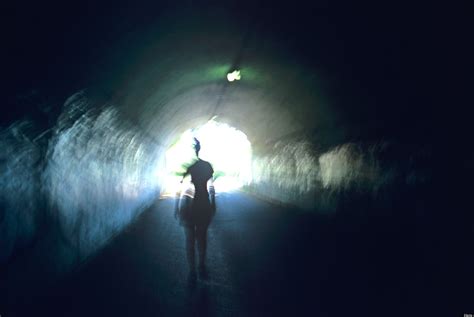I’ve just finished reading fascinating book on a controversial subject, Dying To Know You: Proof of God in the Near-Death Experience by P.M.H Atwater. While reading it, I felt pulled out of my comfort zone. No matter how broad minded we might be about our beliefs, it’s still disconcerting to be brought to the edge of a cliff and asked to look out into a land you’ve never seen before.
Atwater’s recounting of Near Death Experiences (NDEs) are often terrifying, some are quite unsavory, and children are often left unsettled and distressed. These stories are not few and far between, between 38% and 50% of the adults in the U.S. who have come close to clinical death have reported near-death experience. The stories told about those near-death experiences, as Atwater shows, have a remarkable commonality — they provide concrete evidence not merely of an afterlife but an afterlife where we must face everything about ourselves, experiencing the consequences, often very painful, of all we have done.
In Buddhism, what’s called the Bardo is an in-between state of existence between death and rebirth, a place where all our fears have to be experienced and confronted. Similarly, in Catholicism the faithful must pass through Purgatory in order to stand before God. A kind of spiritual fire purifies us, cleansing the soul of all that cannot be brought before God. Atwater confirms that near-death experiences ratify what both the Bardo and Purgatorio stand for — the necessity of facing the reality of ourselves, the worst and the best, before being allowed to journey onward.
We often insist that revelation, scripture and tradition must be handed down so that future generations will not have to start all over again in understanding what it means to know and love God, or to ponder the Infinite, the Unknown, the Absolute. But if you take Atwater seriously, as well as other experts in NDEs, there is something valuable, and more immediate, to be learned from those who have “come back,” as they say.
The number of these near-death reports is growing quickly because of improvements in medical technology, and the remarkable consistency in these stories only underscores the importance of taking note of what NDEs might help to corroborate about our religious beliefs. If medical statistics already record between 36% and 50% of adults who come close to death have these experiences, what will that percentage be in, say, ten years?
Contradicting the message of our shallow culture, NDEs teach us we can’t get away with anything, ultimately, nothing remains hidden. Even what has been done to us, the ways life has shaped us, that, too, must be faced as well. Why? Perhaps that is the nature of Infinite Love, that before our hard outer shell can break, it has to be chipped, blasted, or pounded to dust so that something greater, more vibrant can come to full bloom.
The road we must follow will pass through a fire, where we will finally surrender to face the reality of what we have become — our hearts cannot lie when we finally face God. Call it judgment, if you like, but near-death experiences remind us not to waste the gift of life into something we would be ashamed to place before God.
